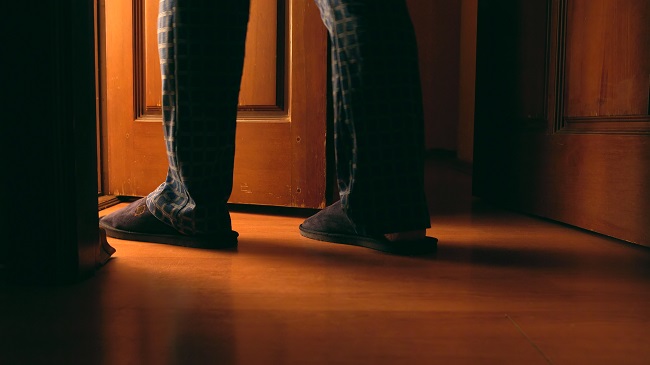
Imagine – you’re laying, all cosied up, in your bed. You’ve just got into a comfortable position and have drifted into dreamland. Then, wham! That pesky little bladder of yours wants to go on a midnight adventure to the bathroom. Sure, it’d be ok if it was a one off – but no! You find yourself taking trips to the bathroom maybe twice or more each night!
If this is all too familiar, and you are the thing going bump in the night, you may be suffering from nocturia.
What is Nocturia?
If you need to empty your bladder two or more times per night, you may be suffering from nocturia. Recognised as excessive night-time urination, nocturia affects up to 40% of adults.
What Causes Nocturia?
Suffering from nocturia means that your body is overproducing urine, this can be caused by:
- Age – As you grow older, you produce less of the antidiuretic hormone. This hormone is produced in the brain as you sleep and tells your kidneys to reduce urine production as you sleep.
- Pelvic organ prolapse – If you have suffered a bladder prolapse, you may be more vulnerable to developing urinary incontinence.
- Menopause – For women, hormonal changes can cause urine storage issues.
- Enlarged prostate – In men, an enlarged prostate can put extra pressure on the bladder, increasing the frequency of toilet trip urges.
- Behavioural – You could have unconsciously created a routine of excessive night time toilet trips through poor sleeping patterns or drinking too much fluid before bedtime.
- Caffeine and alcohol – The one we dread to hear! Yes, unfortunately these drinks and a number of foods and medications are diuretics that increase urine production.
- Bladder capacity – Your bladder may be unable to hold as much urine as it could previously.
Read more about causes of urinary incontinence in the advice section.
How Can You Prevent Nocturia?
Conservative therapies are the first line of treatment for the treatment of nocturia. These include various lifestyle changes and non-surgical medical treatments that help to resolve incontinence cases.
- Kegel! – A stronger pelvic floor = better quality sleep. If you keep your pelvic floor muscles strong and toned, you can help to prevent bladder leakage and fight the urge to go to the toilet during the night. You can strengthen your pelvic floor through manual Kegel exercises, however many men and women find it easier to use electronic stimulation to strengthen their pelvic floor muscles. The Kegel8 Ultra 20 Electronic Pelvic Toner has 20 clinically approved programmes that work with you to tackle all of your pelvic needs! Click here to discover more.
- Control fluids – Try it cut back on drinking fluids in the hours before you sleep.
- Catch some zzz’s – If possible, taking an afternoon nap may help some liquid absorb back into the bloodstream whilst you sleep.
Read about other nocturia prevention and treatment methods here.
Reviews for the Kegel8 Ultra 20 Electronic Pelvic Toner
![]()
Polly - I'm So Glad I Bought This!
"I was getting up around 6 times a night to pee and during the day I could only hold my urine in for an hour and a half tops. It was a real problem and impacted on my life in every way. My whole life seemed to revolve around being near a toilet, so I didn’t wee my pants. Anyway, I took a chance and bought this little machine and after only 5 sessions, with the pads on my back, my trips to the toilet at night are now 2 and I can sleep. It has greatly improved my ability to hold my urine and the time between urinating is longer. It has stopped leakage. I feel relieved and happy.”
![]()
Mrs K - Excellent Results in Days!
"I had been offered surgery for stress incontinence some 3 years ago which I have been very reluctant to have. When my husband saw the adverts for Kegel8, he suggested I try it. Well..... after a week I noticed a difference, I tripped and didn't leak as much for the first time in 20 years. When going to sleep if I stretched I would leak ... no more! Can't wait to see the results after 6 weeks. Definitely should be available on the NHS would save them thousands in unnecessary surgery.”
Sources
[1] Blackwell, T. Yaffe, K. Ancoli-Israel, S. Schneider, J. L. Cauley, J. A. Hillier, T. A. Fink, H. A. Stone, K. (2006). The Journals of Gerontology: Series A. Poor sleep is associated with impaired cognitive function in older women: the study of osteoporotic fractures. [online] 61(4), p405-410. [viewed 19/04/18]. Available from: https://www.ncbi.nlm.nih.gov/pubmed/16611709
[2] British Association of Urological Surgeons. (2017). Nocturnal Polyuria (passing too much urine at night). [online] British Association of Urological Surgeons, 2017 [viewed 19/04/18]. Available from: https://www.baus.org.uk/_userfiles/pages/files/Patients/Leaflets/Nocturnal%20polyuria.pdf
[3] Kupelian, V. Wei, J. T. O’Leary, M. P. Norgaard, J. P. Rosen, R. C. McKinlay, J. B. (2012). European urology. Nocturia and Quality of Life: Results from the Boston Area Community Health Survey. [online] 61(1), p78-84. [viewed 19/04/18]. Available from: https://www.ncbi.nlm.nih.gov/pmc/articles/PMC3226859/#!po=72.2222
[4] Marinkovic, S. P. Gillen, L. M. Stanton, S. L. (2004). The BMJ. Managing Nocturia. [online] 328(7447), p1063-1066. [viewed 19/04/18]. Available from: https://www.ncbi.nlm.nih.gov/pmc/articles/PMC403853/#__ffn_sectitle
[5] National Association For Continence. (2017). Nocturia. [online] NAFC, 2017. [viewed 19/04/18]. Available from: https://www.nafc.org/nocturia
[6] Prince, D. Pedler, K. Rashid, P. (2012). Australian Journal of General Practice. Nocturia: A guide to assessment and management. [online] 41(6), p399-422. [viewed 19/04/18]. Available from: https://www.racgp.org.au/afp/2012/june/nocturia-a-guide-to-assessment-and-management/
[7] Spiegel, K. Leproult, R. Van Cauter, E. (1999). The Lancet.Impact of sleep debt on metabolic and endocrine function. [online] 23(354), p1435-1439. [viewed 19/04/18]. Available from: http://www.thelancet.com/journals/lancet/article/PIIS0140-6736(99)01376-8/fulltext
[8] Yoshimura, K. Ohara, H. Ichioka, K. Terada, N. Matsui, Y. Terai, A. Arai, Y. (2003). Urology. Nocturia and benign prostatic hyperplasia. [online] 61(4), p786-790. [viewed 19/04/18]. Available from: http://www.goldjournal.net/article/S0090-4295(02)02444-5/fulltext




